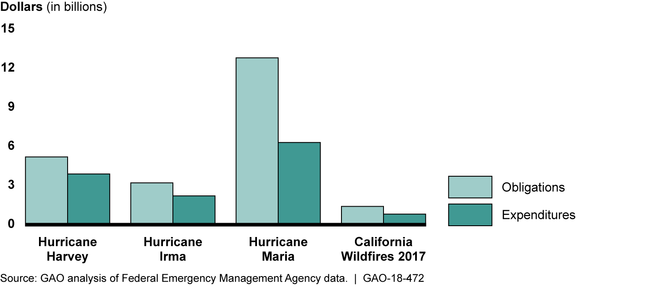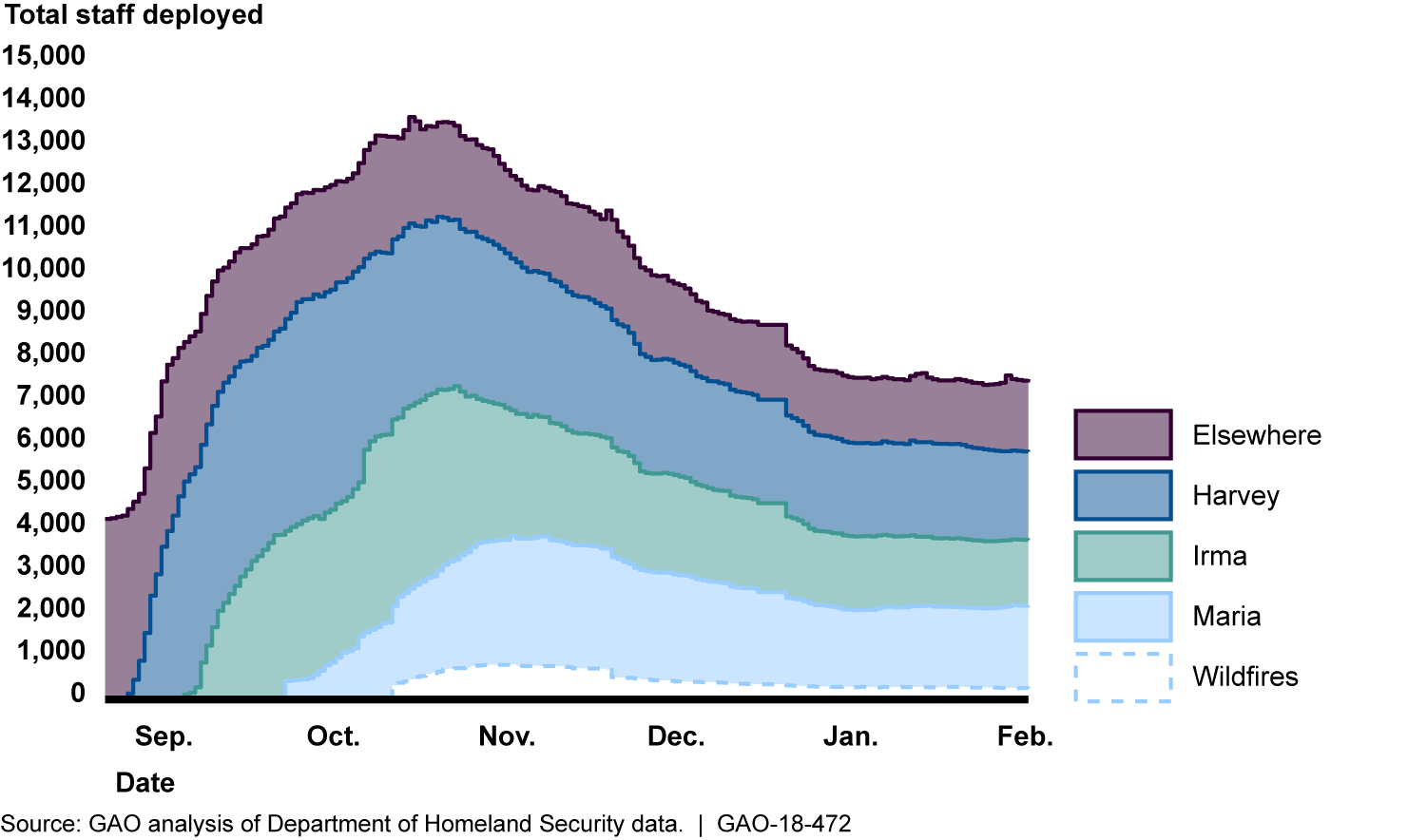A new podcast published Tuesday by the U.S. Government Accountability Office (GAO) said that Hurricane María “overwhelmed” the Federal Emergency Management Agency (FEMA) and the Puerto Rican government last year.
“Hurricane María was another story in Puerto Rico. What we had is basically everyone being overwhelmed in that circumstance. The territorial government was overwhelmed. FEMA was overwhelmed,” said Chris Currie, the GAO’s director for its Homeland Security and Justice team, said during GAO’s Watchdog Report podcast about a GAA study he led regarding disaster preparedness. “And what we saw was, you know, basically FEMA had to call in the cavalry after they understood exactly what was happening. Literally. They had to bring DOD [the Department of Defense] in to provide much of that support, way more so than DOD has ever provided in any other disaster. So that was certainly a very unique challenge that we found and something that FEMA is learning a lot of lessons from. You know one of the other things that happened is because the disasters were sequential, FEMA had already deployed many of its staff and most of its highly trained staff to Florida and Texas. So when Hurricane María hit, they couldn’t quickly redeploy those folks to be as ready as they probably wanted to be there.”
“There’s always new things that nobody ever thought would happen, and we have to deal with those,” Currie added later in the podcast. “Clearly in Puerto Rico, there were significant gaps and weaknesses that were identified actually before Hurricane María by FEMA and the territorial government. But you know, what we found is a lot of the things that happened are things that happen in every disaster. Recovery is always a very difficult challenge. We found housing issues, for example. With so many people affected in the states and territories, without homes, where do you put these people? Do they stay in hotels? Do they stay in rental housing? Do they stay in FEMA trailers? So trying to deal with that across the country, remember these disasters happened 4,000 miles apart from one another, was a massive challenge for FEMA.”
The podcast accompanied the release of a new GAO report called “2017 HURRICANES AND WILDFIRES: Initial Observations on the Federal Response and Key Recovery Challenges.”
Here is part of what the GAO report said:
“The federal government provided significant support to Puerto Rico and the U.S. Virgin Islands in response to Hurricanes Irma and María, but faced numerous challenges that complicated response efforts. FEMA efforts in Puerto Rico alone were the largest and longest single response in the agency’s history. As of April 2018, FEMA had obligated over $12 billion for response and recovery for Hurricane María (see figure below) reflecting the scale and complexity of efforts given the widespread damage. FEMA tasked federal agencies with over 1,000 response mission assignments for Hurricanes María and Irma in the territories at a cost of over $5 billion, compared to about 400 such assignments for Hurricanes Harvey and Irma and the California wildfires combined. For example, FEMA assigned the U.S. Army Corps of Engineers the mission to install over 1,700 emergency electricity generators in Puerto Rico, compared to the 310 for the response to Hurricane Katrina.”


The GAO report also added this:
Nevertheless, GAO found that FEMA faced a number of challenges that slowed and complicated its response efforts to Hurricane Maria, particularly in Puerto Rico. Many of these challenges were also highlighted in FEMA’s own 2017 hurricane after action report, including:
- the sequential and overlapping timing of the three hurricanes —with María being the last of the three— caused staffing shortages and required FEMA to shift staff to the territories that were already deployed to other disasters;
- logistical challenges complicated efforts to deploy federal resources and personnel quickly given the remote distance of both territories; and
- limited preparedness by the U.S. Virgin Islands and Puerto Rico for a Category 5 hurricane and incapacitation of local response functions due to widespread devastation and loss of power and communications led FEMA to assume response functions that territories would usually perform themselves.
The report shared a chart about how many FEMA employees were deployed in 2017:


It also concluded the following:
“Further, federal, state, and local officials faced challenges finding temporary housing for disaster survivors given the extensive damage to available housing in each location. For example, given the widespread damage in Puerto Rico and lack of hotels and other temporary housing, FEMA transported survivors to the mainland United States to stay in hotels. FEMA also used new authorities and procedures to meet the need, such as providing Texas as much as $1 billion to manage its own housing program. However, this approach had not been used or tested in past disasters and state officials noted challenges in managing the program such as staffing shortfalls. State officials further noted challenges in coordinating with FEMA that led to delays in providing assistance to survivors. GAO will continue to monitor these programs.”


